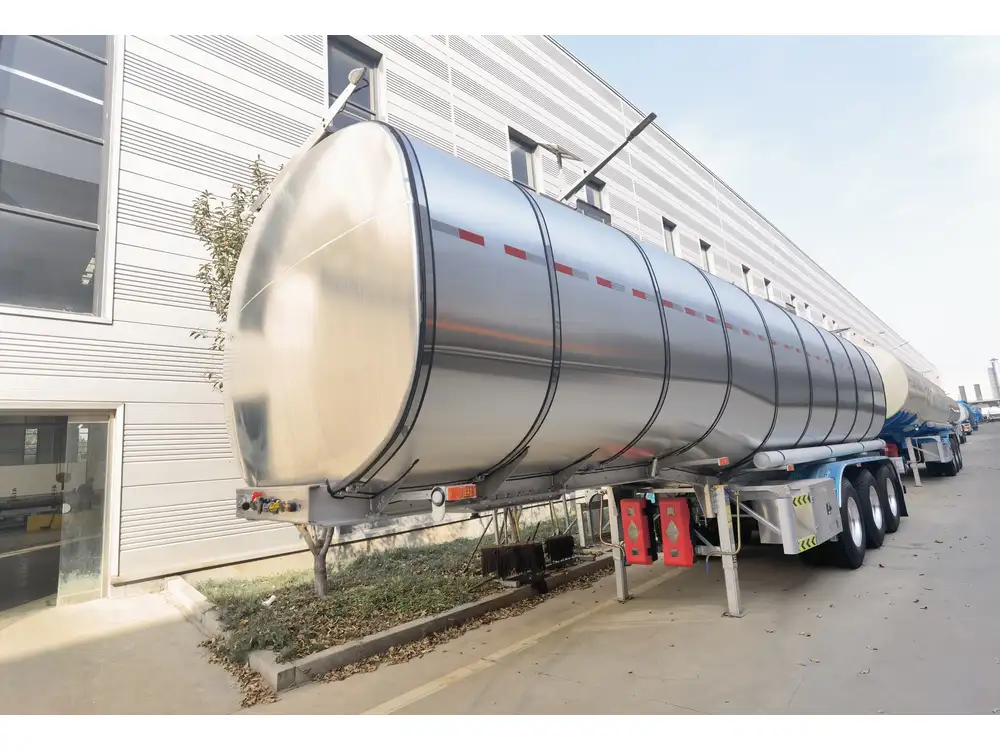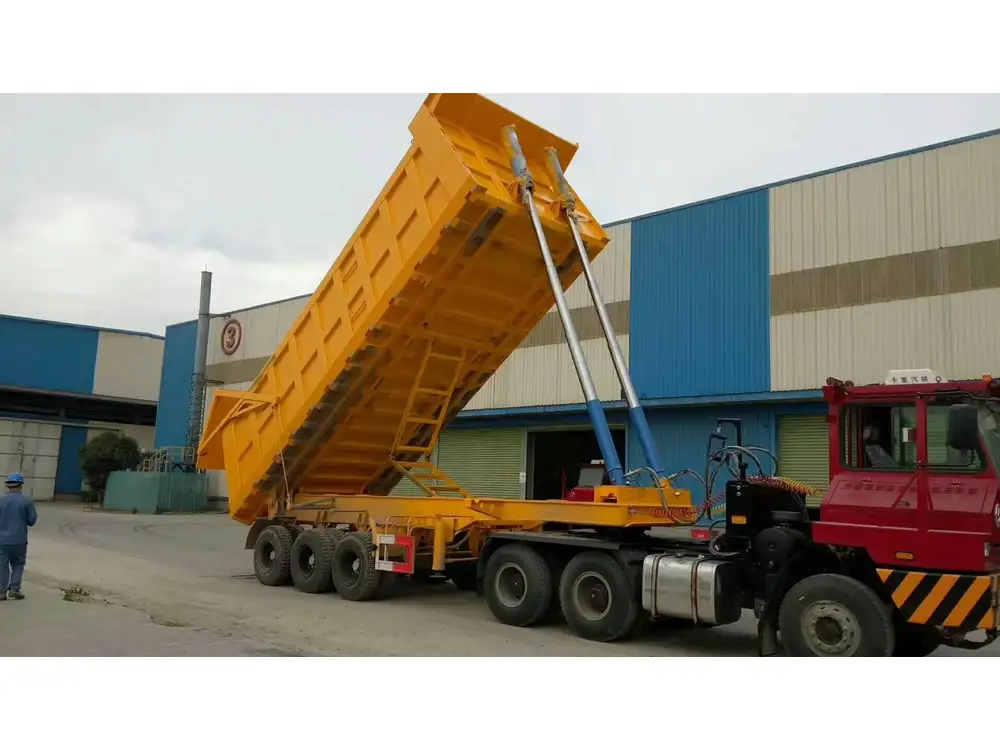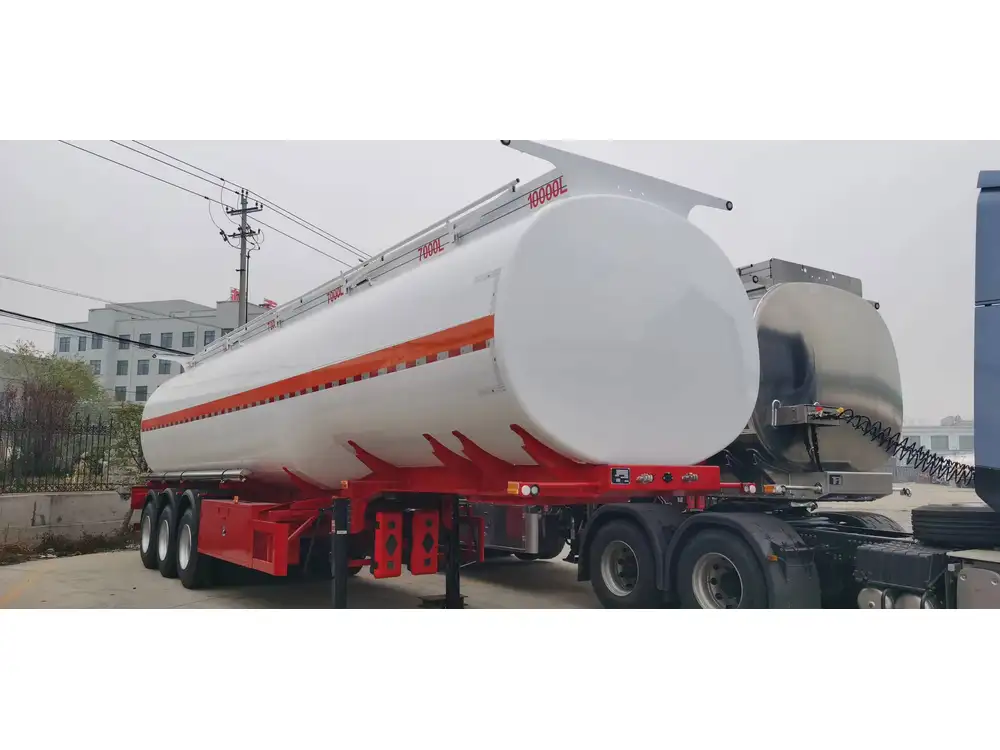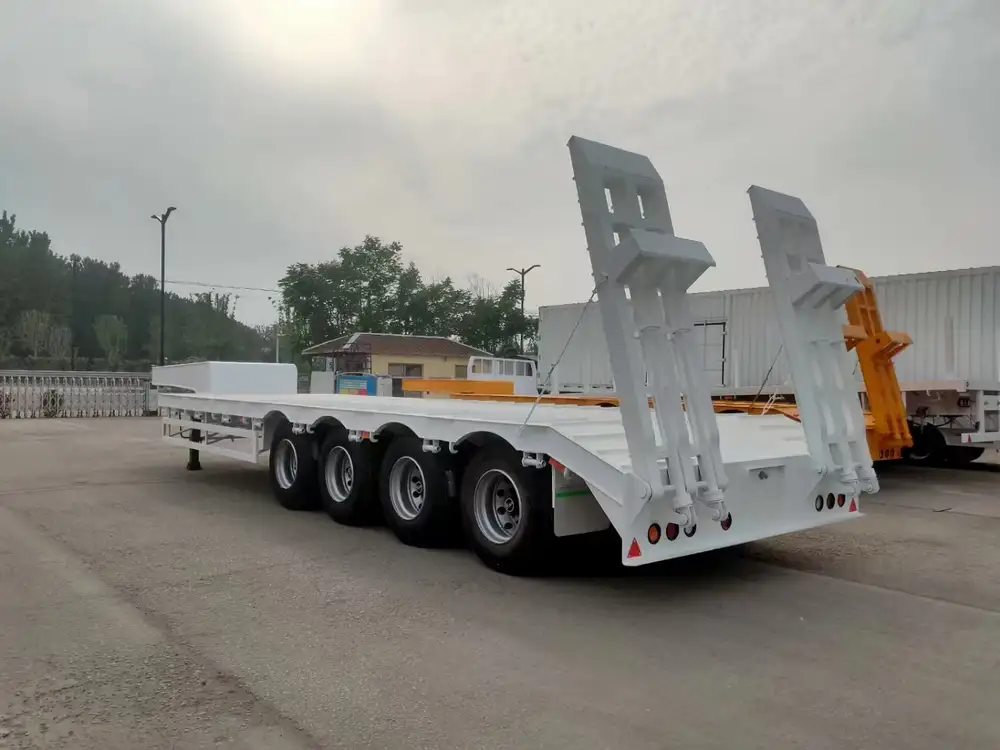What is an End Dump Trailer?
An end dump trailer is an essential piece of equipment in the construction and transportation industry, primarily used for hauling loose materials such as gravel, sand, and demolition waste. Characterized by its hinged rear and an elevating mechanism, this type of trailer allows operators to unload cargo efficiently. Given its versatile applications, understanding how much an end dump trailer can hold is crucial for proper load management and operational efficiency.
Types of End Dump Trailers
In analyzing end dump trailers, it’s important to recognize that not all trailers are created equal. Here’s a brief overview of various types:
| Type | Description |
|---|---|
| Standard End Dump Trailer | Most common type, used in general transportation of bulk materials. |
| Low-Profile End Dump Trailer | Designed for lower loading heights, suitable for operations requiring low clearance. |
| Heavy-Duty End Dump Trailer | Engineered for transporting heavier loads, often reinforced for durability. |
| Aluminum End Dump Trailer | Lightweight yet strong material, ideal for fuel efficiency and ease of handling. |

How Much Does an End Dump Trailer Hold?
The capacity of end dump trailers varies significantly based on several factors, including dimensions, design, and material type. Below, we explore key aspects that determine the load capacity:
1. Common Dimensions
Most end dump trailers fall within standard dimensions, typically available in lengths ranging from 26 to 40 feet and widths between 8.5 and 10 feet. Here’s a rough estimate of the volumetric capacity based on length:
| Trailer Length (ft) | Approximate Volume (cubic yards) | Approximate Capacity (tons) |
|---|---|---|
| 26 | 15-16 | 10-12 |
| 30 | 18-20 | 12-14 |
| 34 | 22-24 | 14-16 |
| 40 | 25-30 | 16-18 |
Note that these figures can vary based on the type of materials being transported. For instance, lighter materials like mulch will allow for more volume without reaching weight limits, compared to heavier aggregates like rocks or asphalt.
2. Material Type
End dump trailers are manufactured using various materials, each impacting both capacity and durability. Steel trailers are heavier but can carry more weight, while aluminum trailers, though lighter, may have a slightly reduced capacity due to their material limitations.

Calculating Payload Capacity
To determine how much an end dump trailer can hold, consider both the volume and weight limitations. The maximum payload is typically dictated by the following factors:
- GVWR (Gross Vehicle Weight Rating): This rating provides the maximum weight the vehicle, including the trailer and its load, can safely carry.
- Tare Weight: The weight of the empty trailer must be subtracted from the GVWR to yield the maximum payload capacity.
For instance, if an end dump trailer has a GVWR of 34,000 pounds and a tare weight of 12,000 pounds, the maximum payload capacity would be:
[ \text{Max Payload} = \text{GVWR} – \text{Tare Weight} = 34,000 – 12,000 = 22,000 \text{ pounds} ]Factors Influencing Capacity
Several external factors can influence how much material an end dump trailer can effectively carry:
Load Distribution: Proper weight distribution across the trailer is crucial for safety during transport; overloading a specific axle can lead to strain and potential failure.
Regulatory Limits: Different states or regions can have specific regulations regarding weight limits. Always check local laws to ensure compliance.
Material Density: The load density significantly affects how much a trailer can hold by weight. For example, sand is denser than mulch, leading to a lower volume for the same weight limit.
Operational Efficiency: Consider how frequently loads are cycled and the nature of the materials being transported. For instance, planning for material compaction may help optimize your load capacity per trip.
Usage Scenarios
Understanding the specialized applications of end dump trailers can help business owners make informed decisions about their equipment needs. Here are some common scenarios:
| Scenario | Description |
|---|---|
| Construction Sites | Ideal for moving aggregate materials, such as gravel and sand. |
| Seasonal Landscaping | Used for transporting bark, mulch, and soil for gardening projects. |
| Demolition Projects | Efficiently haul debris and demolition waste away from sites. |
| Road Maintenance | Commonly transport asphalt and other road repair materials. |

Maintenance and Best Practices
Just as understanding capacity is critical, maintaining end dump trailers ensures they operate efficiently and safely. Regular inspections and adherence to maintenance schedules can prevent downtime and potential accidents.
Routine Checks
- Hydraulics: Inspect hydraulics to ensure the dumping mechanism functions correctly.
- Tires: Monitor tire pressure and tread wear; under-inflated tires can lead to safety hazards and reduce fuel efficiency.
- Brakes: Regularly assess brake systems, crucial for such heavy-duty equipment.
- Frame and Body: Look for cracks or rust which could compromise structural integrity.
Operator Training
Proper training for operators can significantly enhance safety and efficiency. Key training topics should include:
- Safe loading practices.
- Understanding load limits and balancing.
- Proper dumping procedures to avoid tipping or jackknifing.

Common Questions and Answers
Here we address some frequently asked questions regarding end dump trailers to enhance understanding:
Can I overload an end dump trailer?
Overloading can lead to structural damage and pose safety risks. Always adhere to weight limits based on the specific model and local regulations.What materials can I transport?
End dump trailers are versatile, allowing transportation of various materials, including dirt, gravel, asphalt, and construction debris.How often should I perform maintenance?
Regular inspections should occur before and after each job. More comprehensive maintenance should follow manufacturer guidelines, typically every few months.Do I need a special license to operate end dump trailers?
Check local regulations since some jurisdictions may require specific endorsements or training for the operation of heavy trucks and trailers.How do I prevent load shifting during transport?
Implementing proper loading techniques and ensuring weight is evenly distributed will minimize the risk of shifting during transport.
Conclusion
Understanding “how much does an end dump trailer hold” encompasses more than just simple figures. The complex interplay of dimensions, material properties, and operational considerations provides a comprehensive overview for potential users and operators. By integrating proper training, maintenance, and adherence to capacity regulations, businesses can significantly optimize their operations while ensuring safety.
Investing in the right end dump trailer for your needs entails not only a financial commitment but an understanding of the specifications and capacities relevant to your industry demands. As a manufacturer, we pride ourselves on delivering high-quality trailers designed to meet the needs of our clients, ensuring reliability, efficiency, and safety in every load.



